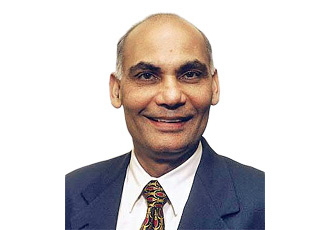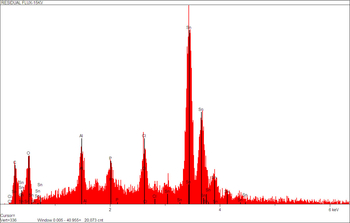SMT - Outsourcing to India
I visit India every year for personal reasons, but tend to teach a class or two while I am there. The year 2003 was unusual for teaching detailed SMT classes because I covered most of the key tech hubs in India — New Delhi, Pune and Bangalore — which I have listed in their increasing importance. Attendance in these two-day classes was 55 in New Delhi, 65 in Pune and 85 in Bangalore, an indication of the level of manufacturing activity in these areas. It’s impressive that these classes were arranged with barely two weeks notice, and attendance numbers would have been higher if we had not discouraged some people from attending.
While attendance in my classes at the major U.S. technical shows has decreased over the years, the attendance in my India classes has steadily increased. I fondly remember when 125 people attended my classes at NEPCON West in 1989 in Anaheim, Calif., my first year of teaching after the first edition of my book was published. Similar numbers attended my class in Surface Mount International (SMI) in San Jose the same year. Both of these major technical show venues have disappeared. Other shows have replaced them, such as SMTA International and APEX, but attendance also has decreased over the years in my classes. Many other classes at some of the major shows have been cancelled due to lack of attendance.
The attendance at any class is not a scientific way of determining what is going on at a broad economic level in any given part of the world, but it does provide a good indication of some level of manufacturing activity. And it is no news that the total number of SMT lines at major subcontractors in the U.S. has decreased drastically over the last two or three years. Where has that equipment gone? You guessed it: First to China and now to India.
While the questions asked in previous years in my India classes used to be more theoretical in nature, they now are more specific and practical. The participants now have to deal with real issues they are facing, such as improving yield and rework of components, especially BGA rework. There also are more questions about design for manufacturing because they are creating more designs locally.
Bangalore is the center of software activity for most major U.S. companies like Intel, Microsoft, GE, IBM, HP, Sun, Oracle and numerous others. While it used to be an exploratory mission for large companies to set up a small software base in India, it now is almost mandatory for software startup companies to outsource to China, India and the lower-cost Eastern European countries as their major business strategy to get funding from venture capital firms. There are two key reasons for this. One is much lower cost, even for highly qualified technical personnel. The second is faster time-to-market for new products. The latter is made possible by 24/7 working hours due to 10- to 13.5-hour time differences.
So far, R&D and development of new technologies and products has been in the U.S. and production work and testing has been outsourced. However, as more work gets outsourced, even high-level managerial positions will be outsourced to coordinate the work of the local team.
So far, venture capital (VC) funding and startups have been the strong suit of the U.S., but perhaps even VCs will set up shop in New Delhi, Pune and Bangalore or in China, and R&D will move there.
China has been the place for hardware work and India for software. However, during my last trip, I was surprised to find that almost all the major electronics manufacturing companies have set up shop in India. They are in the beginning stages to obtain experience under Indian conditions but if they succeed, the next big push for manufacturing will be in India.
There are problems to be solved. For example, the Indian government needs to change its import duty policies on hardware and capital equipment, and India must make a major investment in its basic infrastructure. The technical hubs are becoming overcrowded since the basic facilities are outdated and inadequate.
Despite an adequate infrastructure, outsourcing for both hardware and software will happen because if you don’t do it, your competition will. In the long run this may not be better for the economic ecosystem. Individuals or companies worry about their survival and not the big picture of damaging the environment or the economic ecosystem due to extreme outsourcing. Outsourcing has become a buzzword, and it does not work for all products, technologies and companies, but there is no question as to what the trend is for almost all products except the service industry. So it is inevitable that there will be a reverse “brain drain” to these countries until parity in cost and standard of living is achieved between the East and West. Achieving that parity will take a long time.
Ray P. Prasad is an SMT Editorial Advisory Board member and author of the textbook Surface Mount Technology: Principles and Practice. Additionally, he is president of BeamWorks Inc. and founder of the Ray Prasad Consultancy Group. Contact him at www.rayprasad.com.
While attendance in my classes at the major U.S. technical shows has decreased over the years, the attendance in my India classes has steadily increased. I fondly remember when 125 people attended my classes at NEPCON West in 1989 in Anaheim, Calif., my first year of teaching after the first edition of my book was published. Similar numbers attended my class in Surface Mount International (SMI) in San Jose the same year. Both of these major technical show venues have disappeared. Other shows have replaced them, such as SMTA International and APEX, but attendance also has decreased over the years in my classes. Many other classes at some of the major shows have been cancelled due to lack of attendance.
The attendance at any class is not a scientific way of determining what is going on at a broad economic level in any given part of the world, but it does provide a good indication of some level of manufacturing activity. And it is no news that the total number of SMT lines at major subcontractors in the U.S. has decreased drastically over the last two or three years. Where has that equipment gone? You guessed it: First to China and now to India.
While the questions asked in previous years in my India classes used to be more theoretical in nature, they now are more specific and practical. The participants now have to deal with real issues they are facing, such as improving yield and rework of components, especially BGA rework. There also are more questions about design for manufacturing because they are creating more designs locally.
Bangalore is the center of software activity for most major U.S. companies like Intel, Microsoft, GE, IBM, HP, Sun, Oracle and numerous others. While it used to be an exploratory mission for large companies to set up a small software base in India, it now is almost mandatory for software startup companies to outsource to China, India and the lower-cost Eastern European countries as their major business strategy to get funding from venture capital firms. There are two key reasons for this. One is much lower cost, even for highly qualified technical personnel. The second is faster time-to-market for new products. The latter is made possible by 24/7 working hours due to 10- to 13.5-hour time differences.
So far, R&D and development of new technologies and products has been in the U.S. and production work and testing has been outsourced. However, as more work gets outsourced, even high-level managerial positions will be outsourced to coordinate the work of the local team.
So far, venture capital (VC) funding and startups have been the strong suit of the U.S., but perhaps even VCs will set up shop in New Delhi, Pune and Bangalore or in China, and R&D will move there.
China has been the place for hardware work and India for software. However, during my last trip, I was surprised to find that almost all the major electronics manufacturing companies have set up shop in India. They are in the beginning stages to obtain experience under Indian conditions but if they succeed, the next big push for manufacturing will be in India.
There are problems to be solved. For example, the Indian government needs to change its import duty policies on hardware and capital equipment, and India must make a major investment in its basic infrastructure. The technical hubs are becoming overcrowded since the basic facilities are outdated and inadequate.
Despite an adequate infrastructure, outsourcing for both hardware and software will happen because if you don’t do it, your competition will. In the long run this may not be better for the economic ecosystem. Individuals or companies worry about their survival and not the big picture of damaging the environment or the economic ecosystem due to extreme outsourcing. Outsourcing has become a buzzword, and it does not work for all products, technologies and companies, but there is no question as to what the trend is for almost all products except the service industry. So it is inevitable that there will be a reverse “brain drain” to these countries until parity in cost and standard of living is achieved between the East and West. Achieving that parity will take a long time.
Ray P. Prasad is an SMT Editorial Advisory Board member and author of the textbook Surface Mount Technology: Principles and Practice. Additionally, he is president of BeamWorks Inc. and founder of the Ray Prasad Consultancy Group. Contact him at www.rayprasad.com.

 Registration is Open for SMT Course
Registration is Open for SMT Course
Ray Prasad will be teaching his flagship SMT course:
